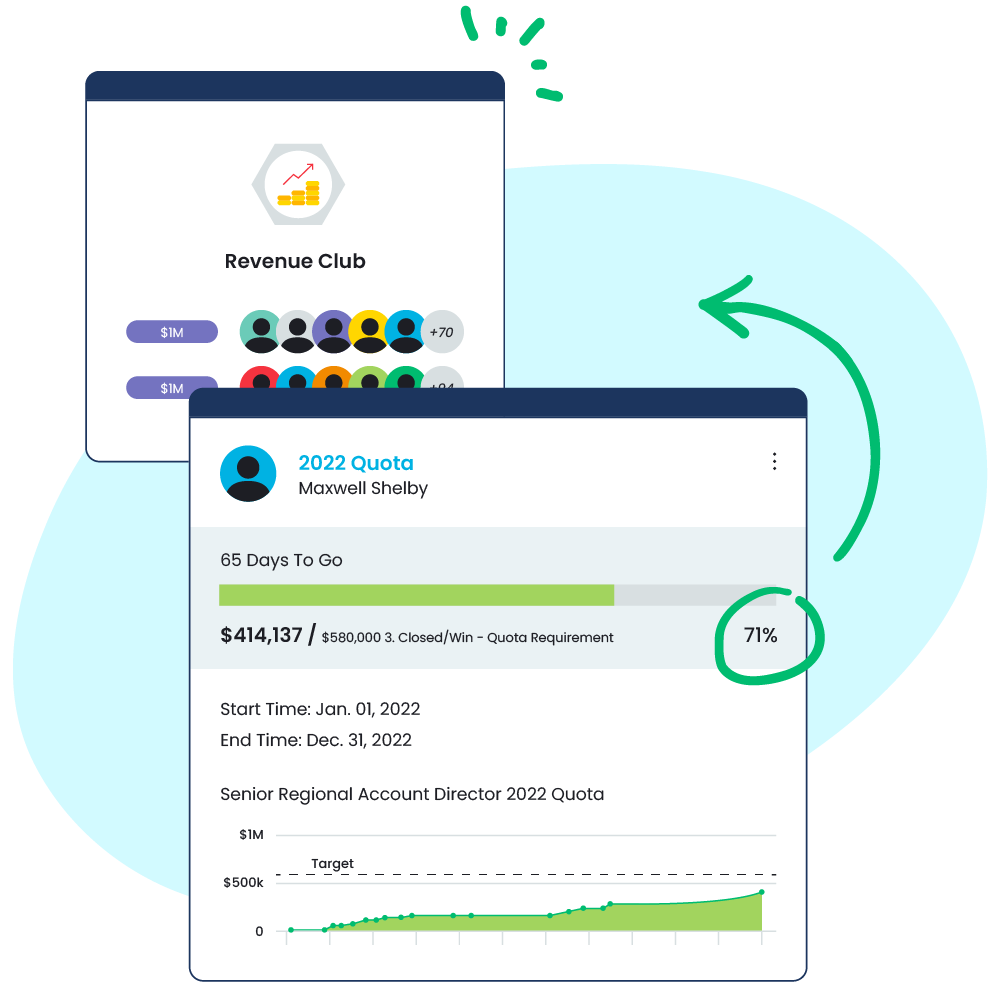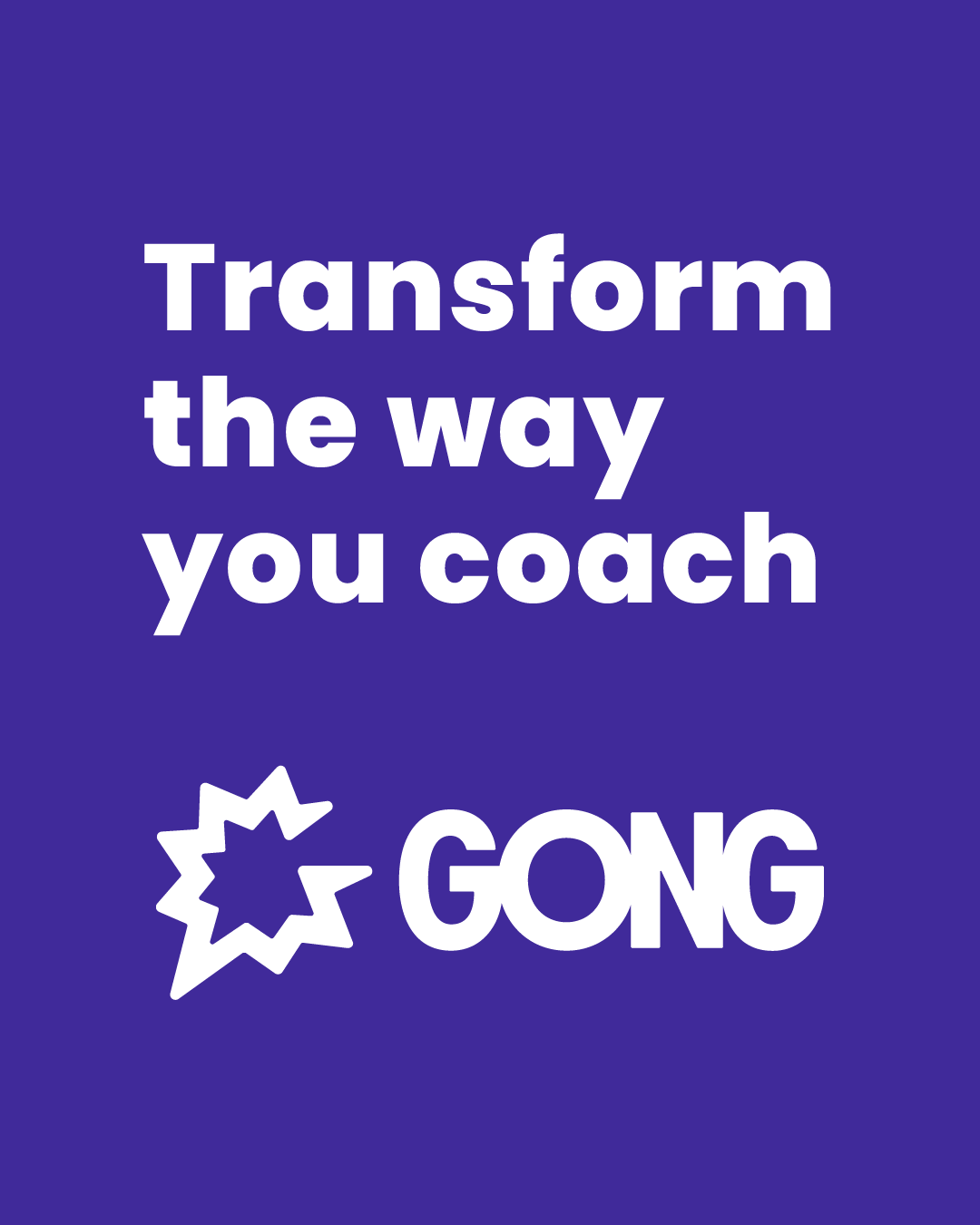What is Sales Enablement
What is sales enablement?
What is sales enablement? Sales enablement is the ongoing process of onboarding, training, and developing sellers with the resources, content, coaching programs, and tools to help them become more effective and successful in their roles. By closely monitoring seller performance, pipeline, and customer feedback, sales enablement teams can continuously optimize their strategy to improve every stage of the buyer journey and better equip sellers to close more deals.
The ultimate goal of sales enablement is to increase bottom-line revenue, and this happens by doing two things:
- Developing customer-centric content
- Training sellers on how, and when, to share and use that content throughout the sales cycle
Sales enablement empowers sales teams by:
- Creating and updating relevant content for each stage of the buying process
- Educating and training sellers on how to do a demo, answer product questions in the market, show competitive advantage, and distribute relevant content
- Monitoring content usage and impact
- Measuring the effectiveness of enablement efforts and optimizing accordingly
A common question regarding sales enablement is where the sales enablement function sits. Who owns it? The answer to this question depends on who you ask, and it varies depending on the size of an organization. In most cases, sales enablement sits in between the sales and marketing teams or as a cross-functional partner on RevOps. While sales and marketing teams have different sets of objectives, sales enablement ensures that their goals are aligned.
Since sellers speak directly with customers and prospects, they have a clear understanding of the questions potential buyers are asking. They know which types of sales enablement content is most effective and digestible for buyers, and they have a clear understanding of the questions potential buyers are asking. These and other critical insights fuel marketing’s overall strategy to produce content that performs well and serves the customer’s needs.
This relationship can be difficult to navigate, but in order to operate effectively and achieve goals, sales, sales enablement, and marketing departments need regular collaboration. A sales enablement process can involve different methods of collaboration that allow sales enablement teams to collect the right information to inform the development of new or improved content, training, and additional resources, such as:
- Regular brainstorming between sales, sales enablement, and marketing
- Sitting in on call reviews
- Acting as a co-coach alongside a sales manager to see what rep skills need additional training
- Reviewing the sales process to understand which sales performance metrics need improvement
An Executive Analysis
How Sales Coaching Impacts Key Business Metrics

Why do you need a sales enablement strategy?
Aside from maximizing the impact of both sales and marketing efforts, why do you need a sales enablement strategy?
Think about it: high-performing sales teams aren’t sustainable—or actually high-performing—if they only rely on a small group of key players. With a sales enablement strategy, and the right sales enablement tools, you’re able to understand what top performers are doing right and develop enablement resources that help replicate those behaviors across the entire sales team. A strong sales enablement strategy gives everyone the opportunity to achieve success by providing access to the right resources and ongoing product, industry, and skill development training.
But industries, markets, and B2B selling are constantly fluctuating. Buyer needs are constantly changing. Sales enablement exists to provide the right education and updated content to help sellers adjust to those changing needs and requirements. Without a sales enablement strategy, sellers have no clear course of action and are left to create and surface the right content on their own—which takes away from the time they could (and should) be selling. When sellers have the right content to share at each stage, they can use their conversation time more productively and move accounts down the pipeline faster.
A critical part of every sales enablement strategy is to help tell a bigger story about your product and the impact it will have on users. In order to continue to provide value to potential customers, you must be aware of what resonates with them, how well you respond to their needs, and if there’s more you could be doing to more effectively equip your sellers. Perhaps your reps are sharing the right content, but you’re still not seeing results. This is an opportunity to utilize sales coaching software and create a training program that will help reps pitch and distribute that content more effectively.
Sales Enablement Examples
From customer-facing resources to internal enablement programs, a successful sales enablement strategy includes a variety of different materials to serve both potential buyers and sales teams. Sales enablement examples include different types of content, training, coaching, templates, and certifications. For both buyers and sellers, sales enablement content can be organized by funnel stages: awareness, consideration and buying, and implementation.
Awareness
Sales enablement examples of customer-facing awareness content may reach a buyer either directly from a seller or indirectly through a company’s website. This type of enablement content serves to answer a buyer’s initial questions about your product, as well as help them see your product or service as the superior choice in the market. The purpose of awareness content is to position you as the expert on whatever it is you’re selling while educating your ideal customer. This content may include:
- Blog posts and thought leadership
- Ebooks
- White papers
- Case studies
- Newsletters
For sellers, awareness-stage sales enablement materials should help accelerate the sales cycle from the very beginning. Sellers may provide the enablement content listed above directly to a prospect, but along with that content, sellers have likely received sales training and coaching on how to pitch that content. Additional examples of internal enablement content for the awareness phase include:
- Cold calling scripts
- Objection handling workshops
- Follow-up email templates
- Competitor Battle Cards
- Outbound sales training
- Buyer personas
Consideration/Buying
When a prospect moves into the consideration stage of buying, they need sales enablement content that gets a bit more granular. Now that they understand what your product does and how it might solve their problems, they want to better understand how things work and what their results can look like. Examples of customer-facing sales enablement during this stage include:
- Templates
- Explainer videos and demos
- Customer testimonials
- Pricing downloads
This stage of the process is critical for sellers, as they now have prospects who are seriously considering buying. Sellers need to be armed to answer every question and continue to show the value and communicate ROI. Examples of internal sales enablement content include:
- Training programs or videos with certifications
- Negotiation training and role-play
- Competitor analysis resources
- Coaching on mapping the buying process and building a mutual action plan
- Proposal templates
- Scorecards
Implementation
The work is only beginning when a customer implements your product. Now, it’s time to nurture them, prove value, and ultimately retain that customer. At this stage, focus on providing enablement that makes the implementation process smooth and easy, as well as sharing resources that will encourage full product adoption. Examples include:
- Onboarding playbooks
- Implementation videos
- In-depth product feature videos
- Templates
Sellers must provide excellent customer service at the implementation stage. Continuing to nurture the relationship by answering questions, providing valuable resources, and responding knowledgeably to customer needs is essential. Examples of seller enablement include:
- Onboarding playbooks for customer success managers
- Email templates
- Implementation checklist
Sales Enablement Best Practices
Because sales enablement serves your business from the inside out, creating a sales enablement strategy can feel overwhelming. How can you best serve your customers and your sellers every step of the way? Following this list of sales enablement best practices will help you build a thorough and thoughtful sales enablement strategy.
- Define goals and objectives
What is the goal of your sales enablement content or strategy? Define what you hope to achieve through a specific piece of content or training program. What does success look like and what are the metrics that matter?
- Develop content based on the buyer journey
As mentioned above, consider each stage of the sales funnel and what questions a customer might be asking during each. Use those questions as a guide to develop your content.
- Facilitate ongoing coaching and training
Different questions arise at different points in the sales cycle, and different skills are required to handle those questions. Pay attention to sales performance and where your sellers might need additional training.
- Implement sales enablement tools
Take advantage of different sales enablement tools to keep your content organized, accessible, and track usage.
- Track usage and effectiveness
Keep track of how often salespeople are using sales enablement, and analyze their performance to determine how well that enablement is working. This will help you understand where your enablement opportunities are and what is successful.
- Collaborate with marketing and sales teams
Stay in lockstep with sales and marketing to ensure your enablement programs are relevant. What questions are buyers asking? What resources or skills are sellers lacking?
- Identify top performers’ best practices
Analyze seller performance to see who your top performers are and what they do to be successful. What sales enablement materials are they utilizing? Can you create additional enablement, or redistribute the most successful enablement content, to replicate those behaviors across the entire team?
- Audit and optimize your strategy
Don’t wait until performance is down to assess your enablement strategy. Regularly evaluate your sales enablement program to see where you can proactively optimize to better serve buyer, seller, and market needs.
- Know your audience
Keep in mind what buyers and sellers want and need throughout every stage of the sales cycle, but also pay attention to shifts in the market and economy. How can those changes inform a stronger strategy?
Types of Sales Enablement Tools
What are sales enablement tools? A sales enablement tool is a software or platform that connects every component of your sales cycle. Ideally, a sales enablement tool serves as a one-stop shop for your entire enablement strategy by aggregating sales performance management, analytics, content, and coaching.
Sales enablement software is essential for scaling your strategy. From managing and distributing content to recording videos to engaging buyers, implementing the right tools will save you and your team valuable time and ultimately help you better connect with and serve your ideal customers. Here are some of the most important types of sales enablement tools you should consider adding to your tech stack to build a more successful enablement strategy.
- Customer relationship management (CRM)
- Content management system (CMS)
- Sales management software
- Sales engagement tools
- Sales intent/intelligence
- Sales coaching and training software



